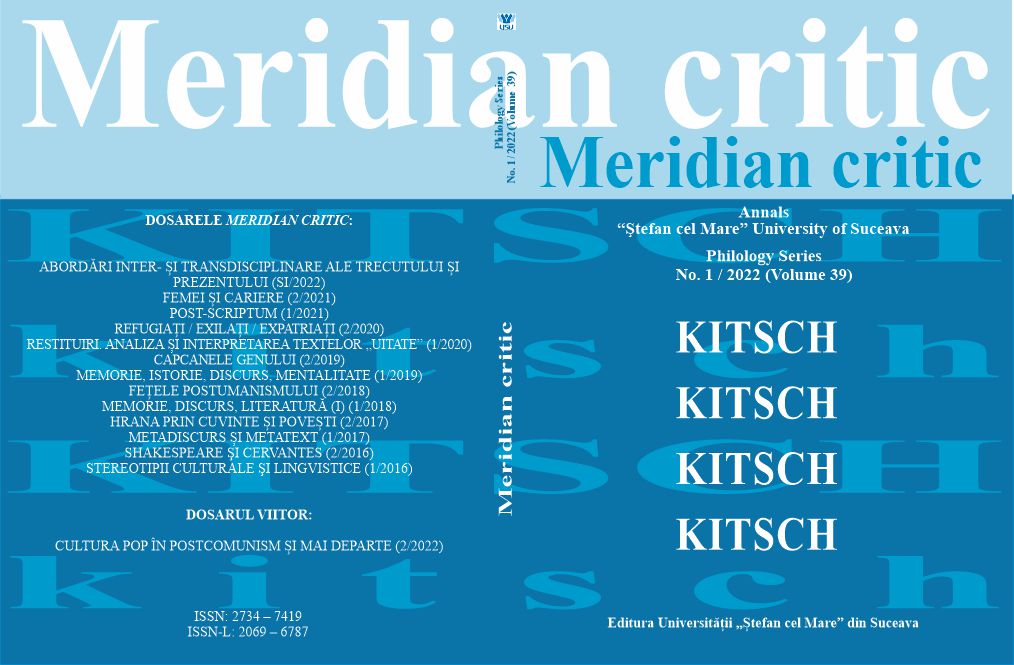Kitschul, răul absolut şi lumea distopică
Kitsch, Absolute Evil and the Dystopian World
Author(s): Emanuela ILIESubject(s): Language and Literature Studies, Studies of Literature, Theory of Literature
Published by: UNIVERSITATEA »ȘTEFAN CEL MARE« SUCEAVA
Keywords: Romanian dystopia; kitsch; post-Covid era; hybridization; totalitarianism; utopia; spirituality;
Summary/Abstract: At a first glance, the touch points between kitsch and dystopia are quite few. The dark and unsettling universe of this species that proposes, in summary, the image of a perfectly evil world seems to be created by an authorial instance for which ideas such as waste, opulence or “relaxation hedonism” [Călinescu 2017: 275] are totally foreign to it, while austerity seems to be, on the contrary, a letter of law. The result of his demolishing projections appears in the form of a grim fictional world, where lives a humanity for which the cruelty of hopelessness seems to be one of the essential conditions of survival in a limited, rigid, pauper space. A dark, cruel world, in which habitation involves coercion and strict obligation to comply with harsh rules, but freedom of organization and expression is impossible, and any human being is forced to develop with objects either an ascetic relationship, or a strictly functional/cybernetic one, and by no means a kitsch one. [Moles 1980: 26-30] Looking at things in depth, however, such a parallel is not at all difficult to achieve. Both the creator of a dystopian world, and that of a kitsch universe, work with a certain stylistics of evil (be it deeply ontological, strictly socio-political, broader culturally or just aesthetically), rely a lot on repetitiveness/stereotyping, cliché, falsification, but also implicit satirization of what they offer, constantly resort to counterfeiting and mystification, etc. Moreover, unlike most authors of dystopias (be they technological, scientific or catastrophic) of the twentieth century, the prose writers who chose to capitalize in the last few years on the structural and formal patterns of dystopia have managed to configure crowded, eclectic, almost suffocating dystopian universes, populated by human figures with attitudes and gestures suspiciously similar to those of kitsch-men. Such narrative choice probably has to do with the profound need to sound, in the good tradition of dystopia, a strong alarm signal regarding the aggravation of some collective diseases that during the pandemic have almost become chronic – from the striking increase of socio-economic inequalities and the inefficiency of some institutionalized forms of education to the hallucinatory, media-fueled consumerism, passing, of course, through the dependence on gadgets of all kinds, the obsession with rapid digitalization, etc.In order to reveal these correspondences, I will analyze one of the most interesting dystopias that have seen the light of print in the midst of the pandemic: Ligia Pârvulescu’s debut novel entitled Translucent, which won the “First Novel” contest, organized by Litera Publishing House in 2021, but also one of the prestigious Chrysalis Awards, recently awarded by the European Science Fiction Society.
Journal: Meridian critic
- Issue Year: XXXIX/2022
- Issue No: 1
- Page Range: 41-54
- Page Count: 14
- Language: Romanian

